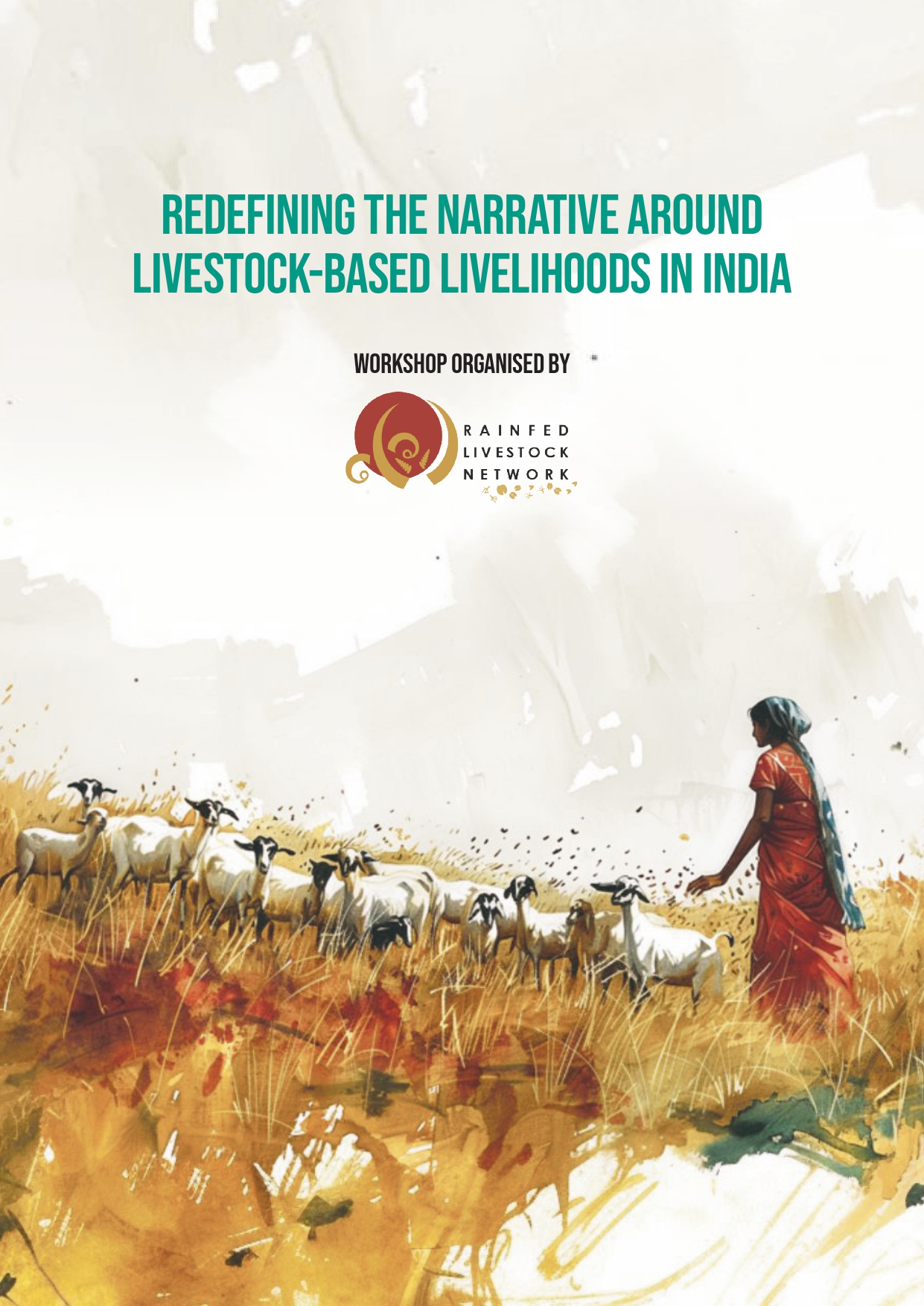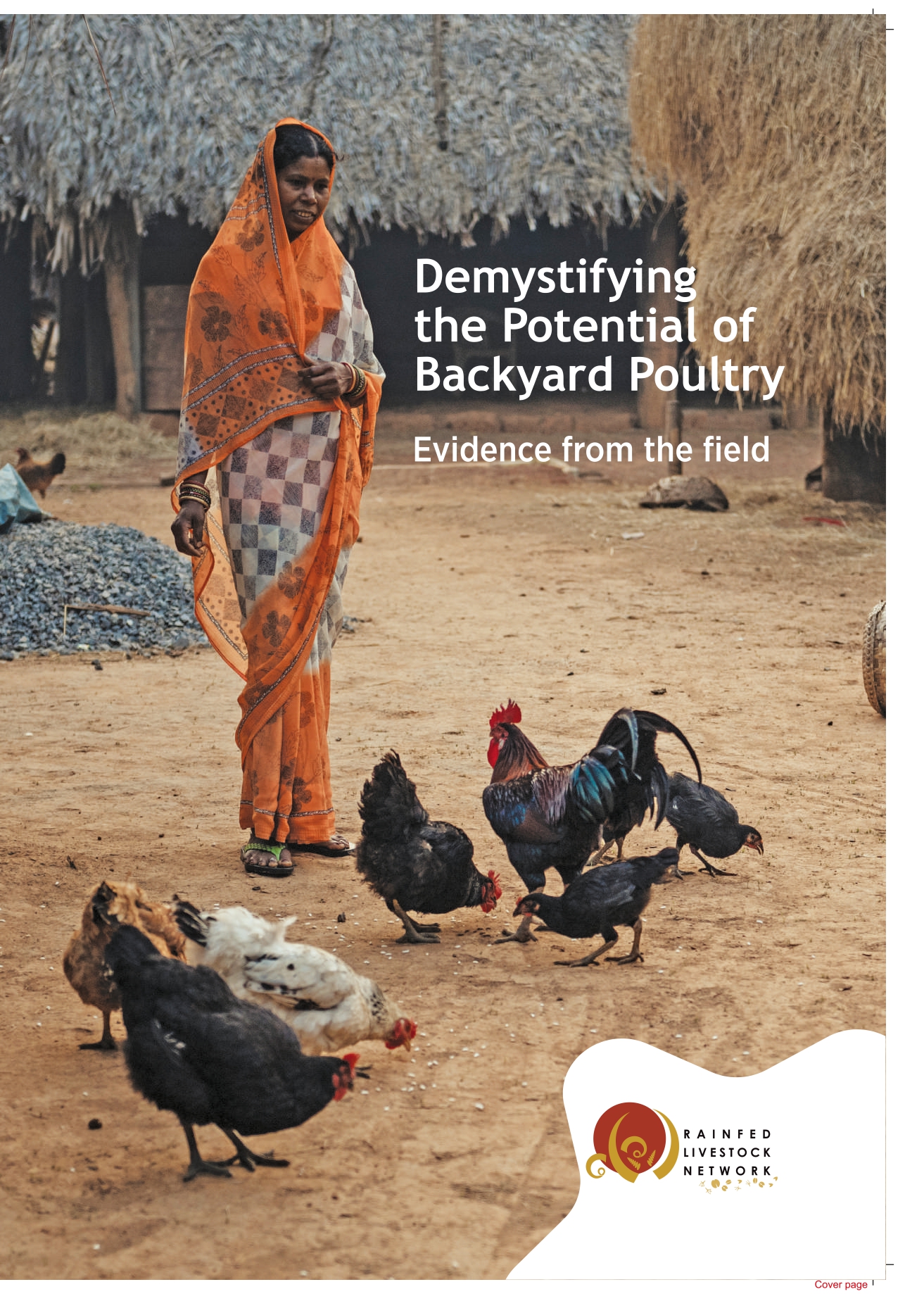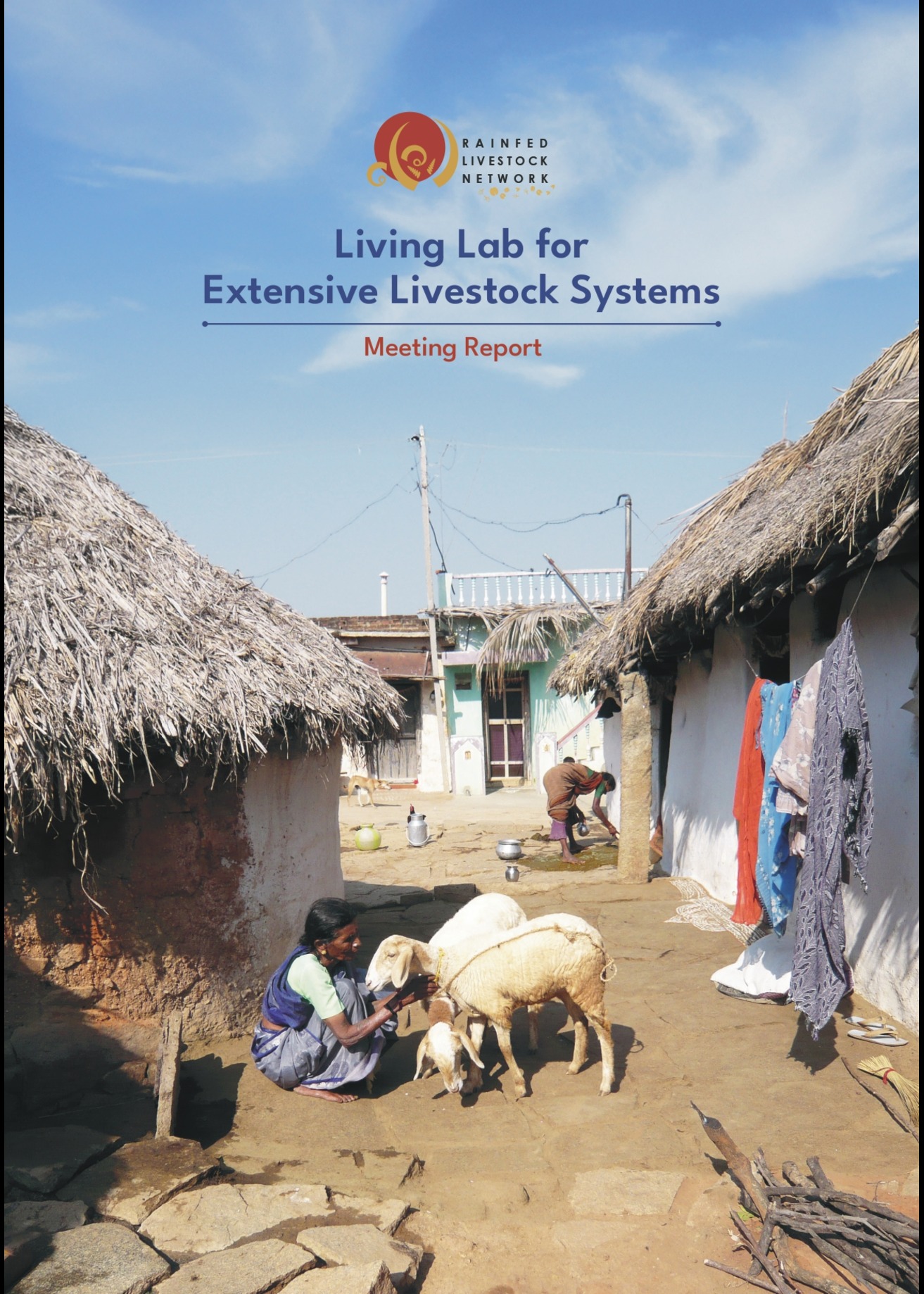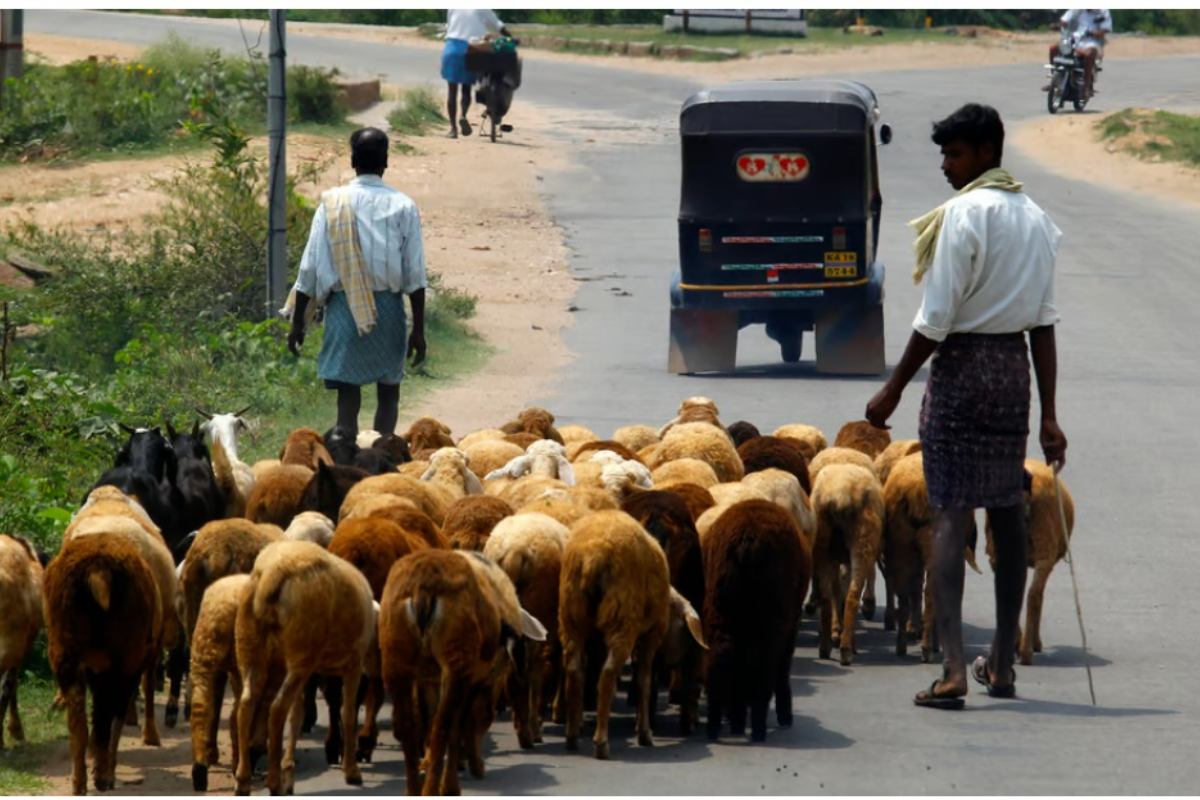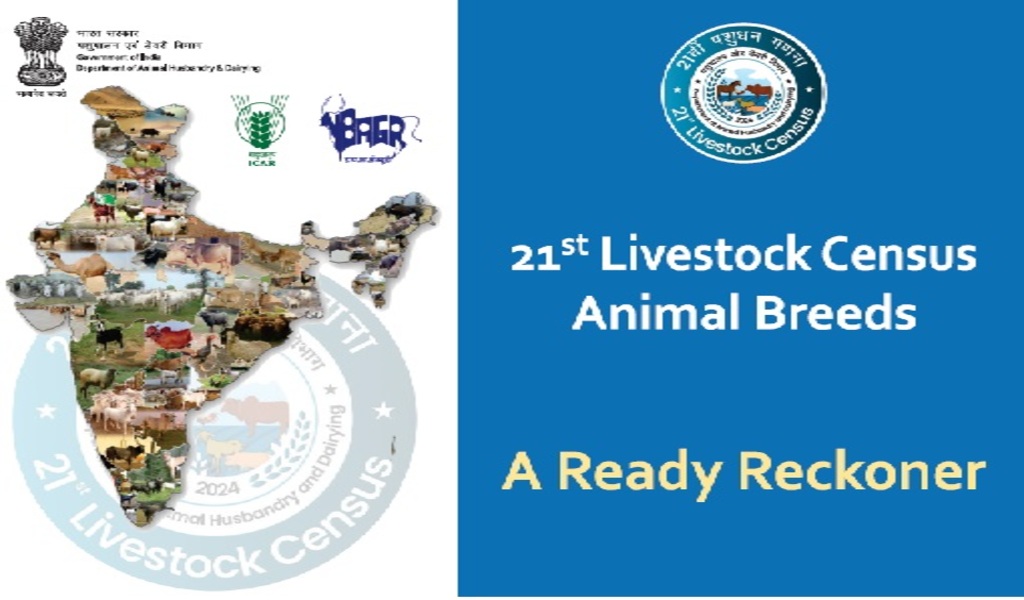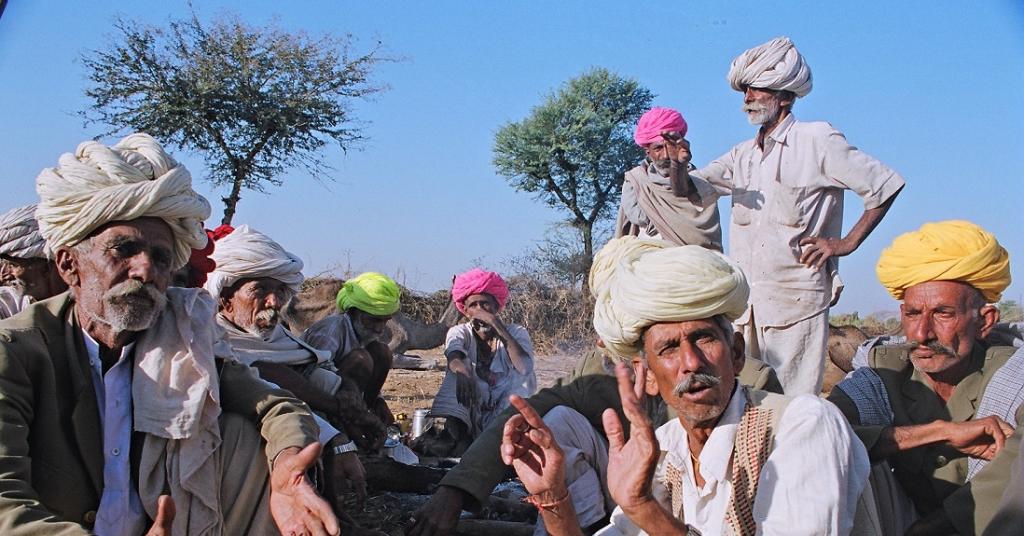Rural Households, Livestock Keeping and Rainfed Regions – The Significance
Livestock is an integral component of rainfed farming systems. As rainfed agriculture is risk-prone, possession of livestock both large and small acts as liquidity and an economic cushion for rural farming communities. In India’s rainfed areas of 106 million hectares, rainfed agriculture supports more than 60% of the livestock population.
Livestock has advantages over crop cultivation in rainfed areas. Animals are movable assets that can be shifted to areas where the rainfall has been adequate. In addition, and in contrast to crop, livestock is a self-replicating asset. For over thousands of years, humans have benefited from the ability of cattle, sheep, goats, camels, and other herd animals to actively search out and convert natural vegetation into products and services that satisfy basic human needs. In the current scenario of climate change and falling groundwater levels, it is especially important that we ensure these communities can carry out their activities without increasing their carbon footprint and stretching groundwater resources.
Animal genetic resources used for food and in agriculture are an essential component of the biological basis that sustains world food security. India is one of the 12 mega biodiversity centres of the world. It has a rich repository of diverse breeds of domestic animals and birds which play a crucial role in adapting and developing agricultural production systems as well as increasing the resilience of India’s food supply systems. However, this knowledge base, the tactics and skills of these communities remains invisible and unacknowledged and needs to be studied by researchers and policy makers.
Statistics reveal that resource-poor small and marginal farmers and landless labourers own 71% of cattle, 63% of buffaloes, 66% of small ruminants, 70% of pigs and 74% of poultry in India. Livestock provide food, fibre, fuel, and draught-power and their wastes are used as manure which a critical resource for crop production. Most importantly, in rural economies, livestock act as cash, are considered potential savings and an insurance against crop failure.
RLNs’ Vision Paper
Shaping Policies to Support Socially and Ecologically Sustainable Livestock Development in India’s Rainfed Areas
Summary
Indian livestock contributes to around 40 percent and 70 percent of the agricultural GDP in the semi-arid and arid regions, respectively. with increasing demand for livestock products, this sector has great potential to contribute to poverty alleviation, which is largely untapped. This demand can provide significant opportunities for the rural poor from rain fed regions to increase returns from their livestock resources.
Pastoral Dialogues
Prof. Purnendu Kavoori answered how the common man’s general perception of some 40 years ago about Pastoralists as destroyers of ecology has changed in the recent years – thanks to closer interactions and studies by individuals and civil society to clearly highlight their integrated role in supporting environment, biodiversity and food security of the world.


